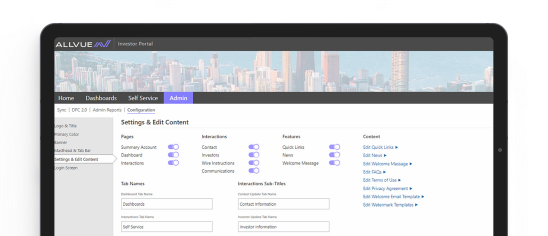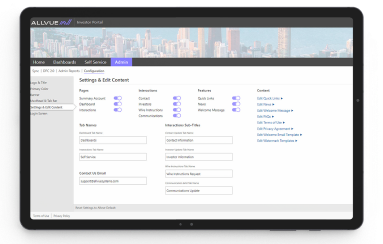
By: Dmitri Sedov
Chief Data & Analytics Officer
October 28, 2025
In September and October 2025, the market was jolted by the collapse of Tricolor and the bankruptcy of First Brands — events that exposed how quickly hidden risks in credit structures can surface. That wake-up call is refocusing attention on the need for transparency, governance, and substantiation across credit markets.
In this blog, we explore how the industry is responding. Better data, smarter valuation frameworks, and applied AI are becoming fundamental to how credit is priced, managed, and communicated.
Addressing Structural Challenges in Private Credit Valuation
The main challenge in valuing private credit can be summed up in three words: data, design, and discipline.
Data remains the biggest obstacle. Private credit has grown faster than the infrastructure built to measure it. Information is fragmented across fund administrators, internal systems, and unstructured documents. Multiple versions of a borrower’s EBITDA may exist with no universal identifier connecting them. When institutions mark portfolios, they often do so with partial, delayed, or inconsistent information. Everyone acts in good faith, just not from the same set of facts.
Then comes design. Private credit deals are inherently bespoke. Each loan includes different covenants, repayment waterfalls, or payment-in-kind features, all of which affect cash flows and recovery. Yet many systems still store these nuances as free text, leaving room for interpretation. Two analysts can read the same clause and arrive at very different conclusions about risk.
Finally, discipline. In private credit, most pricing is “mark-to-model”. When markets shift, models can diverge quickly, moving valuations based on changing assumptions rather than credit events. Tracking, benchmarking, and linking assumptions back to underlying data are critical to valuation integrity.
At Allvue, we are tackling all three: connecting asset-level data, standardizing covenant structures, and building a shared, data-informed foundation for valuations. It’s not about a single “right” valuation number. It’s about transparency in how numbers are constructed.
The Rise of NAV Financing and the Transparency Challenge
NAV financing — loans backed by fund portfolios rather than individual assets — is among the most innovative developments in private markets. It lets managers access liquidity without selling holdings and offers banks diversified collateral exposure. But it also introduces leverage on top of illiquidity, making visibility into potential risks critical.
The first risk is portfolio construction. A NAV facility may be secured by hundreds of underlying loans or equity positions, each behaving differently. If borrowers show signs of stress, those signals can take weeks to reach the fund or its lender.
The second risk is timing. Private assets are typically valued quarterly, sometimes less frequently. By the time new valuations arrive, the borrowing base may already have changed.
And then comes alignment. Lenders seek control; GPs seek flexibility. In a stress event, who decides what gets sold and when? These governance mechanics matter as much as the data.
The market appetite for data transparency is growing. Banks and fund managers want one view of asset-level insights, risk compliance, and early-warning indicators.
Allvue’s Nexius Data Platform helps provide that visibility by combining fund admin data, loan-system feeds, and monitoring reports into a single, dynamic, trusted source. This doesn’t eliminate risk, but it makes risk visible and explainable, and that changes the conversation.
From Opinion-Based to Evidence-Based Pricing and Risk Assessment
Private credit is undergoing a shift from opinion-based pricing to evidence-based pricing.
Today, institutions use their own assumptions and reference data. One team prices from spreads, another from cash-flow models, another from internal ratings. All are reasonable, but all are different. The result is valuation dispersion and endless reconciliation.
To close that gap, the industry needs two things. First, better underlying data: borrower financials, covenant terms, and realized outcomes mapped to consistent borrower identities and time series. Second, a shared modeling framework, with standardized definitions of default, recovery, and scenario stress. That ensures comparisons are truly like-for-like across managers and banks.
It’s like meteorology: different agencies may have their own forecasts, but they start from the same temperature and pressure readings. Private credit needs the same baseline.
At Allvue, we are building that scaffolding with Nexius Intelligence, an open data framework where firms can plug in their models and work from consistent inputs. The goal isn’t a single “truth,” but a much tighter range of uncertainty. That’s what investors, lenders, and regulators all want: clarity with comparability.
How AI is Reshaping Valuation and Risk Monitoring
AI is finally becoming practical in private markets, and it’s driving progress in three key areas.
Reading: Most private credit information still sits in documents — credit agreements, compliance certificates, and loan notices. AI can extract key terms automatically: covenants, maturities, collateral, guarantors, payment schedules. This turns thousands of static pages into structured data. It doesn’t replace judgment; it simply removes friction and human error.
Recognizing: Once data is structured, AI can detect patterns, such as a borrower’s performance slipping, clusters of covenant breaches in certain sectors, or portfolios drifting outside their risk appetite. AI doesn’t make the call; it highlights where human attention is needed most.
Reasoning: This is where humans and AI collaborate. AI can generate scenarios, find comparable cases, and run “what-if” analyses in seconds, giving analysts and risk teams a meaningful head start.
Our approach is to build AI solutions directly on top of real asset-level data, grounding insights in facts. Our Agentic AI assistant, Andi, helps interpret covenant language, summarize exposure trends, and suggest relevant benchmarks. Andi can surface early-warning signals, identify loans driving portfolio risk, and link those insights back to valuation and monitoring workflows.
AI tools like AI won’t replace human analysts, but they will give analysts superpowers: faster insight, broader context, and more time to focus on the decisions that matter most.
Transparency as the New Alpha
If there’s one idea that unites all of this, it’s that transparency is the new alpha in private credit.
When data is clean, models are comparable, and technology turns noise into insight. Firms gain more than accurate valuations – they gain better decision-making.
At Allvue, we are investing in combining data, automated workflows, and analytics into a connected ecosystem that helps banks, asset managers, and fund administrators operate with greater confidence and efficiency.
Recent innovations include Credit Research Solutions, which provides centralized research and streamlined workflows for loans, bonds, and private credit, and AI-enabled data extraction that integrates data from private markets documentation into systems, templates, and workflows.
These innovations — and the progress they represent in predictive risk analytics, agentic workflows, and data-driven credit intelligence — are why Allvue was recently recognized by Chartis as a Category Leader in its 2025 Credit Portfolio Management (CPM) Solutions Quadrant.
More About The Author

Dmitri Sedov
Chief Data & Analytics Officer
Dmitri Sedov is an accomplished data and product executive with a long-standing track record of driving innovation across financial technology and capital markets. His expertise includes AI strategy, data platform development, and leading analytics transformation at scale. Most recently, Dmitri was SVP and Group Head of Product at LSEG, where he partnered with Microsoft to launch an AI-enabled cloud platform that redefined data access for financial professionals. Prior to LSEG, he held senior leadership roles at Nasdaq, Preqin, and S&P Global, where he led global teams across product, data, and analytics functions. Dmitri is responsible for expanding Allvue’s workflow ecosystem with AI-powered data platforms, real-time analytics, and trusted insights to support smarter, faster decision-making for private capital markets. He holds an MBA from Pace University’s Lubin School of Business and degrees from NYU, University at Albany, and Moscow State University.


